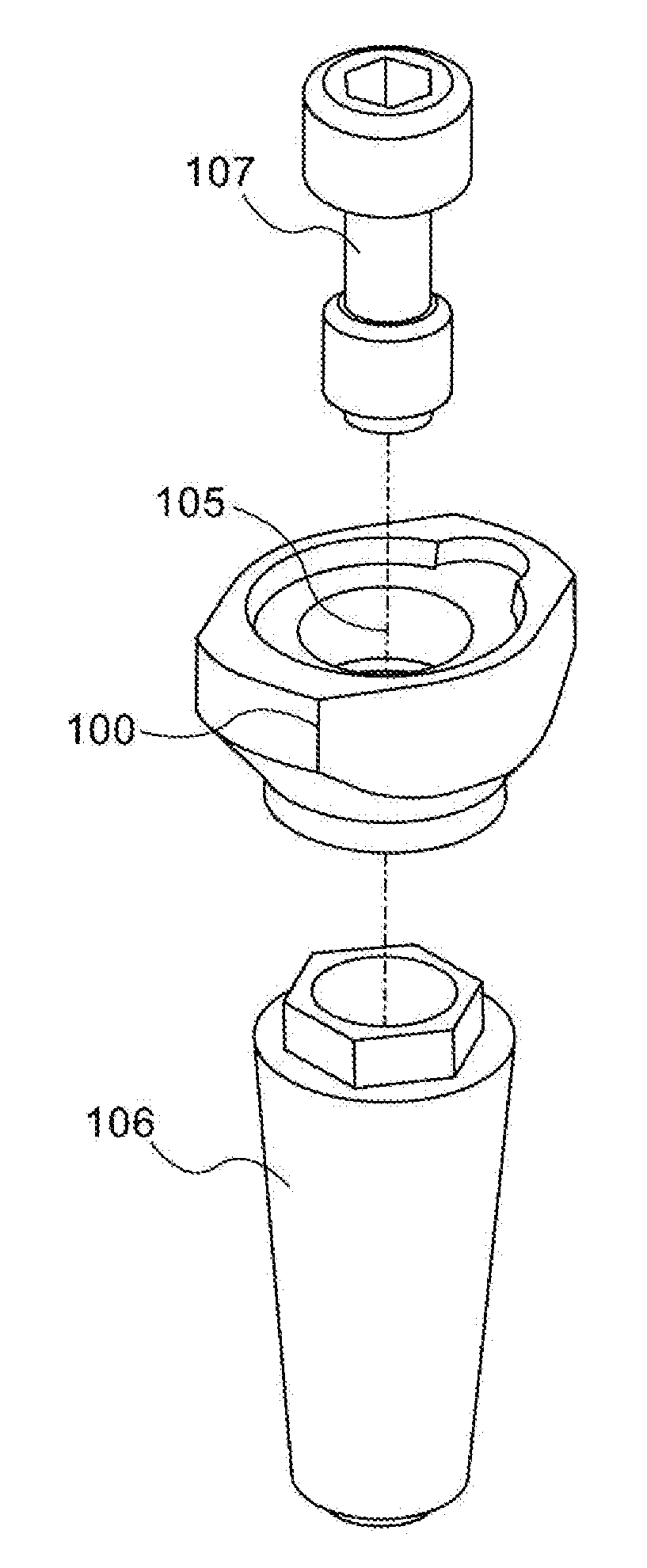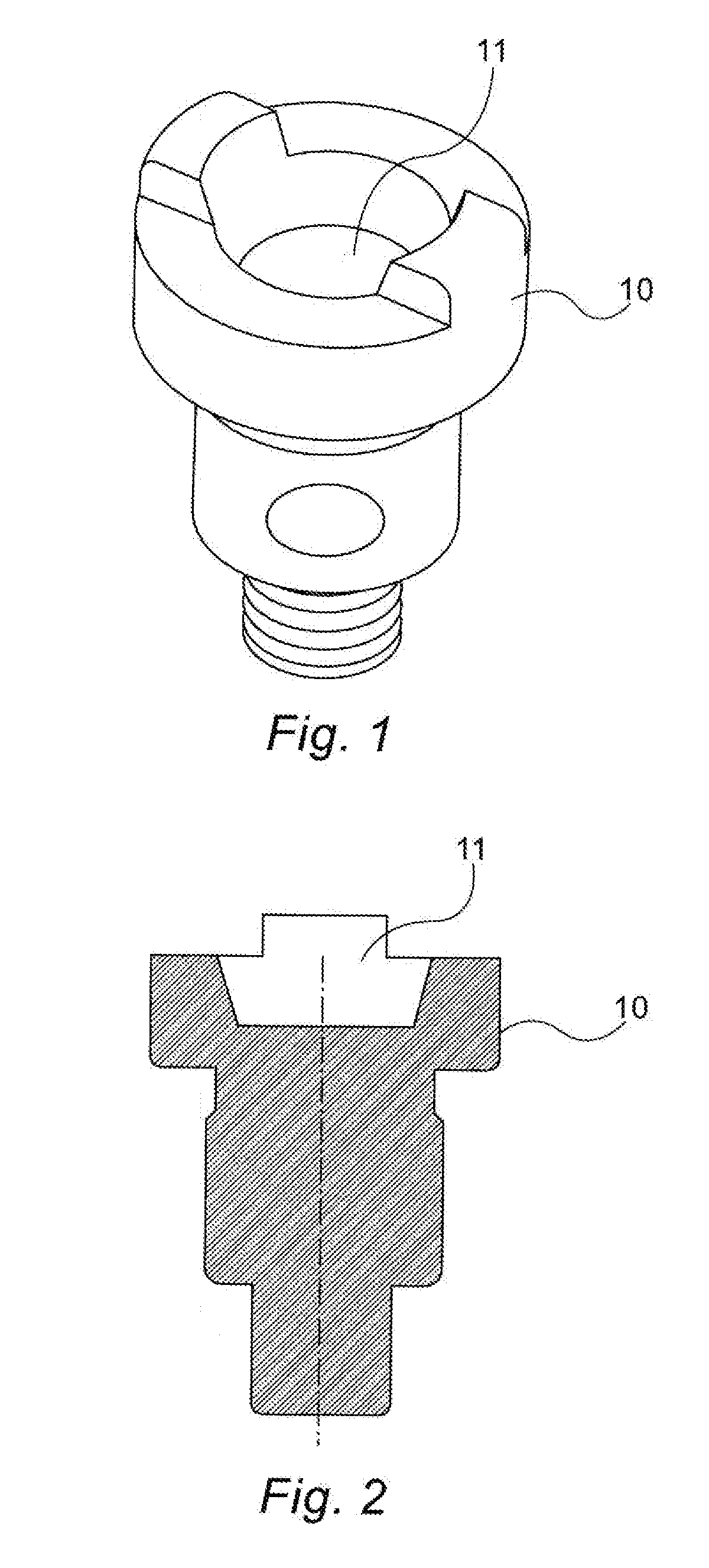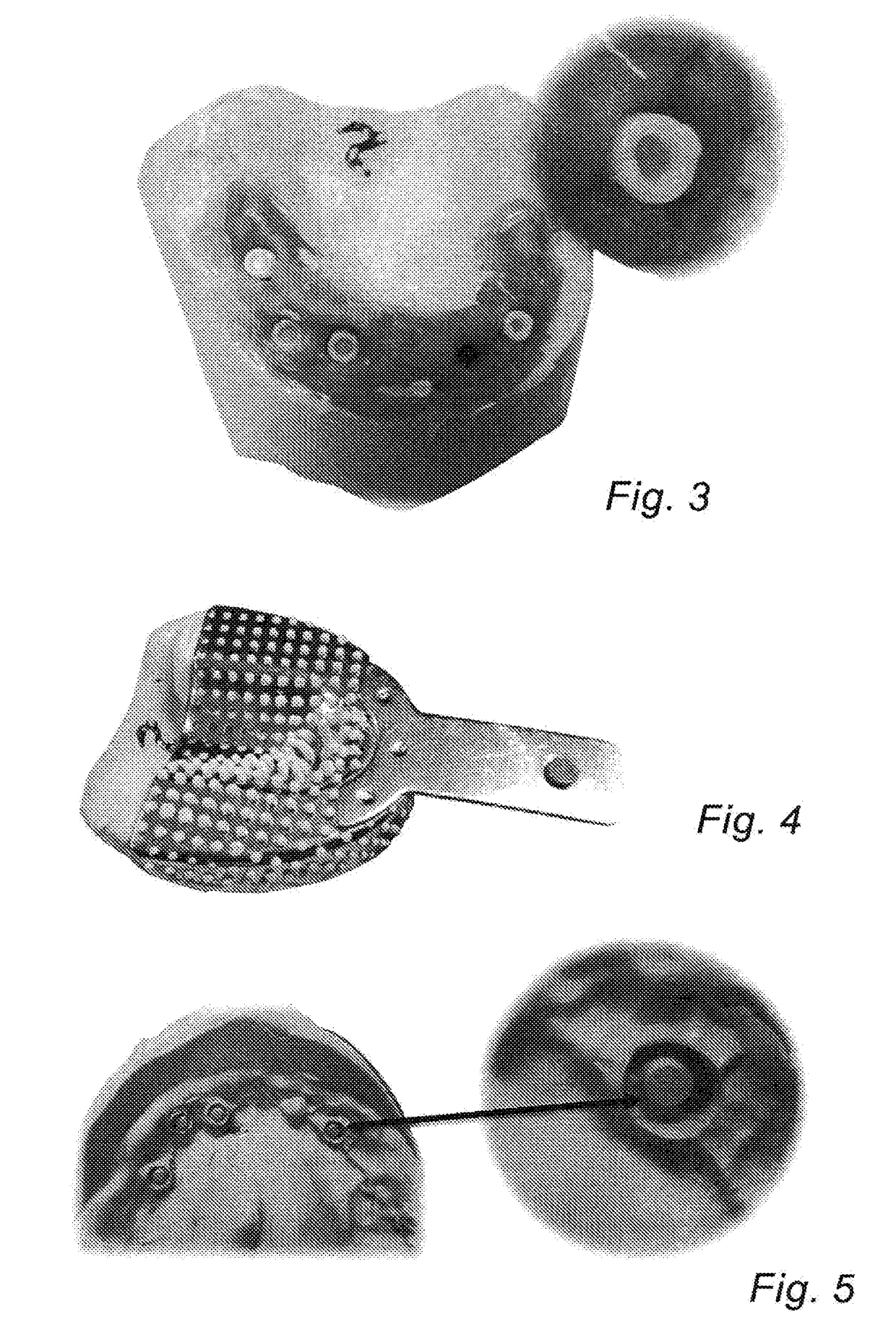Dental implant procedure by scanning a closed tray impression
- Summary
- Abstract
- Description
- Claims
- Application Information
AI Technical Summary
Benefits of technology
Problems solved by technology
Method used
Image
Examples
Embodiment Construction
[0038]Reference is first made to FIGS. 1 to 3 which show a shape transfer cap used to determine intraorally the positioning and orientation of a dental implant fixed in a jawbone. For that purpose, the shape transfer cap is inserted in a corresponding dental implant in the mouth of a patient.
[0039]FIG. 1 shows a schematic isometric view of an example of a non-engaging shape transfer cap 10 of the type described in the present disclosure, having a negative depression in its upper surface 11, so that its negative in the impression will have a positive protruding feature, making it more accurate to scan.
[0040]FIG. 2 shows a cross sectional drawing of the shape transfer cap 10 of FIG. 1, showing the negative depression 11 in the top surface.
[0041]FIG. 3 shows an example of a patient's mouth with multiple shape transfer caps fitted.
[0042]A closed tray impression is then taken as illustrated schematically in FIGS. 4 and 5. FIG. 4 shows a closed tray impression. FIG. 5 is a photograph show...
PUM
 Login to View More
Login to View More Abstract
Description
Claims
Application Information
 Login to View More
Login to View More - R&D
- Intellectual Property
- Life Sciences
- Materials
- Tech Scout
- Unparalleled Data Quality
- Higher Quality Content
- 60% Fewer Hallucinations
Browse by: Latest US Patents, China's latest patents, Technical Efficacy Thesaurus, Application Domain, Technology Topic, Popular Technical Reports.
© 2025 PatSnap. All rights reserved.Legal|Privacy policy|Modern Slavery Act Transparency Statement|Sitemap|About US| Contact US: help@patsnap.com



